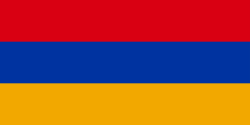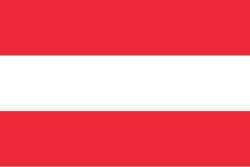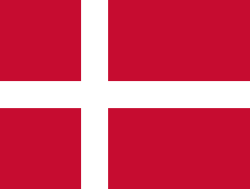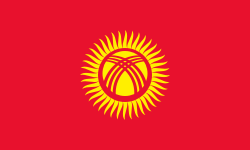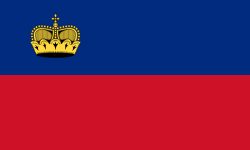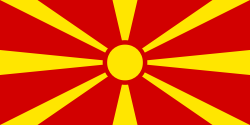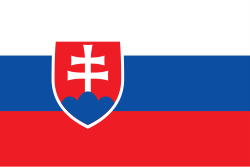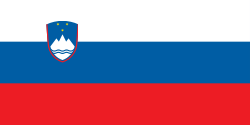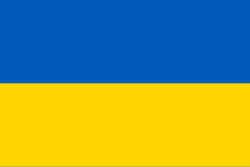General Information
Population
Immigration
Emigration
Working-age population
Unemployment rate
GDP
Refugees, Asylum seekers, IDPs
Citizenship
Territory
Migration Authorities
Responsible Body
Line Ministries
Agencies
Description
Hungary remains a relatively ethnically homogeneous country with an estimated population of 9.5 million as of 1 January 2025. The population continues to decline due to natural decrease and limited immigration. The share of foreign-born residents, estimated at around 6.7%, has risen markedly from earlier estimates of 2%, yet remains low compared with many EU countries. The population is also ageing, with those aged 65 and above significantly outnumbering children under 15. The government continues to prioritise pronatalist policies – financial incentives, childcare support, and public campaigns – to boost fertility rather than relying on immigration to address demographic decline.
According to the Hungarian Central Statistical Office (KSH), the number of foreigners residing in Hungary has increased steadily in recent years. In 2024, the country hosted 250,912 foreign residents, the highest number recorded since 1995. Most foreign residents come from European countries, primarily Germany (23,295), Slovakia (16,889) and Romania (15,740). Hungary also hosts 92,644 Asians, including 21,165 of Chinese descent, as well as smaller groups from America (7,854) and Africa (10,597). The recent growth reflects a notable rise in employment-driven migration, as well as the continued presence of persons granted temporary protection who fled Ukraine since 2022. In 2024, the main purposes of stay among foreign residents were employment (100,818), settlement (38,998), education (35,867), and family reunification (27,031).
In 2024, Hungary issued 87,624 first residence permits to non-EU citizens, up from 68,672 in 2022, and 322% higher than in 2015. Most permits, were granted for employment (64%), followed by education (23%), and family reasons (6%). While employment- and family-related permits remained relatively stable, education permits doubled compared with 2023. Permits issued to Chinese citizens quadrupled, rising from 2,578 in 2022 to 8,093 in 2024, mostly for employment. A similar patterns appeared among Tunisians, whose permits increased from 183 in 2022 to 600 in 2024, driven by both education and employment. Despite the growth in the flow, the stock numbers based on all valid residence permits remained stable over the past five years, reaching 220,588 in 2024, with 48% for employment, 15% for education and 11% for family reasons.
On the emigration side, 41,294 Hungarian citizens left the country in 2024, up from 21,730 in 2021, the highest figure in fourteen years. The main destinations were Austria, Germany, the Netherlands and Switzerland. Austria saw the largest increased, receiving 22,864 Hungarian migrants in 2024. Migration to Germany peaked in 2015 (11,248), with 7,887 Hungarians moving there in 2024. [IL1] [DS2]
The stock of Hungarians living abroad at the end of 2024 stood at 538,794. The most populous Hungarian communities reside in Germany (212,221), Austria (96,849), Switzerland (29,553), Canada (28,068), the Netherlands (22,720), Slovakia (17,710), Sweden (16,739), and Israel (13,993). [IL3] [DS4] Despite Hungary having a relatively low unemployment rate, which stood at 4.5% in September 2025, the search for economic opportunities abroad remains among the most common reasons for emigration.
Between 2000 and 2024, immigration to Hungary followed a gradually rising yet fluctuating trend. Annual inflows remained stable at around 20,000-25,000 persons during the 2000s. From 2016 onward, immigration began to increase more sharply, reaching record levels between 2018 and 2023, driven mainly by labour demand and the arrival of displaced persons from Ukraine after 2022. Although inflows declined slightly to 49,278 in 2024, they remained well above historical averages. The number of Hungarian citizens returning home has also shown a marked increase over the past decade, climbing from 1,575 in 2010 to 22,583 by the end of 2021. In 2024, the number of Hungarian returnees reached 28,885. This increase underscores a structural shift in Hungary’s migration balance, with return migration increasingly offsetting outward flows suggesting that migration has become more circular rather than permanently outward.
Despite the government’s restrictive stance, Hungary increasingly admits skilled workers to fill labour shortages in sectors such as construction, manufacturing, and services. Bilateral labour mobility agreements and simplified recruitment procedures have been introduced to attract foreign labour. [IL5] [DS6] Hungary has also introduced legal pathways for non-EU nationals – including the “guest worker” permit and employment-based residence permits – to address existing gaps, decentralise recruitment and streamline work-permit procedures for select countries.
Since 2015, Hungary has maintained a consistently restrictive approach to granting international protection, following the record 177,000 asylum applications lodged that year. Priority is given to individuals of Hungarian descent. In 2024, only 29 asylum seekers filed applications, and 10 persons received refugee status/subsidiary protection. According to UNHCR, Hungary hosted around 72,359 refugees in 2024, with most being nationals of Afghanistan (1,437), Syria (800), Iraq (581) and Somalia (592).[IL7] Like all other EU Member States, Hungary activated temporary protection in response to Russia’s invasion of Ukraine in 2022. By September 2025, slightly over 42,000 temporary protection beneficiaries from Ukraine remained in Hungary.
On the asylum side, Hungary continues to operate under Act LXXX of 2007, though procedural access remains highly limited. Amendments adopted in 2024-2025 introduced only minor technical adjustments, mainly affecting administrative procedures rather than substantive rights. These include Government Decree 361/2024 (XI. 28.) which set transitional rules for the asylum process, and Decree 23/2024 (XII. 30.) of the Ministry of Foreign Affairs designating specific embassies for submitting declarations of intent to apply for asylum. As highlighted by the European Council on Refugees and Exiles (ECRE), these changes remain largely procedural and do not expand access to international protection.
The fight against irregular migration remains a high priority for Hungary. The number of non-EU nationals found to be illegally staying in the country fluctuated widely between 2008 and 2024, peaking at over 420,000 in 2015 during the migration crisis. A renewed increase occurred after 2020, with detections reaching 89,370 in 2020, 134,140 in 2021, and 222,515 in 2022, before falling again to 159,780 in 2023 and 35,520 in 2024. Since 2016, the number of non-EU nationals refused entry at the Hungarian border has also risen, surpassing 34,000 persons per year in 2020-2021, and then declining to 7,000 in 2024. The number of persons ordered to leave declined from close to 12,000 in 2015 to 4,500 in 2021 and 5,690 in 2024. At the same time, return rates have slowly grown, standing at 38.8% in 2024.
Hungary continues to attract international students through educational programmes, such as the Stipendium Hungaricum scholarship. In 2023, Hungary hosted 38,480 international students. The largest share of foreign students in tertiary education come from Germany (8%), followed by Romania (6.7%) and China (5.9%). The numbers of international students have been increasing since 2015. By contrast, Hungarian students studying abroad go mainly to Austria, Germany and the UK.
Between 2022 and 2025, Hungary implemented a series of major reforms reshaping its migration and asylum system, focusing on tighter control over third-country nationals and greater selectivity in labour migration. The most significant development was the adoption of Act XC of 2023 on the General Rules for the Entry and Residence of Third-Country Nationals, which entered into force on 1 March 2024. This law replaced the previous entry and residence framework and introduced stricter admission rules, new residence categories, and a streamlined permit system. It distinguished between “guest worker” and employment-related residence permits, limiting long-term residence prospects and reinforcing the temporary nature of most foreign employment.
Building on this framework, a Government Decree effective 1 January 2025 further restricted access to Hungary’s labour market by making citizens of only Georgia and Armenia eligible for new guest-worker and employment permits. The annual quota for such permits was capped at 35,000. Additional amendments planned for mid-2025 aim to digitise migration procedures, clarify employer responsibilities, and increase compliance monitoring. Hungary’s new framework provides a more formalised – though narrow – basis for labour migration, marking a transition from ad hoc to highly regulated and quota-based migration governance
Hungary participates in several regional and international migration dialogues, including the Prague Process, and the Khartoum and Rabat Processes, and serves a co-chair of the Budapest Process.
Relevant Publications

